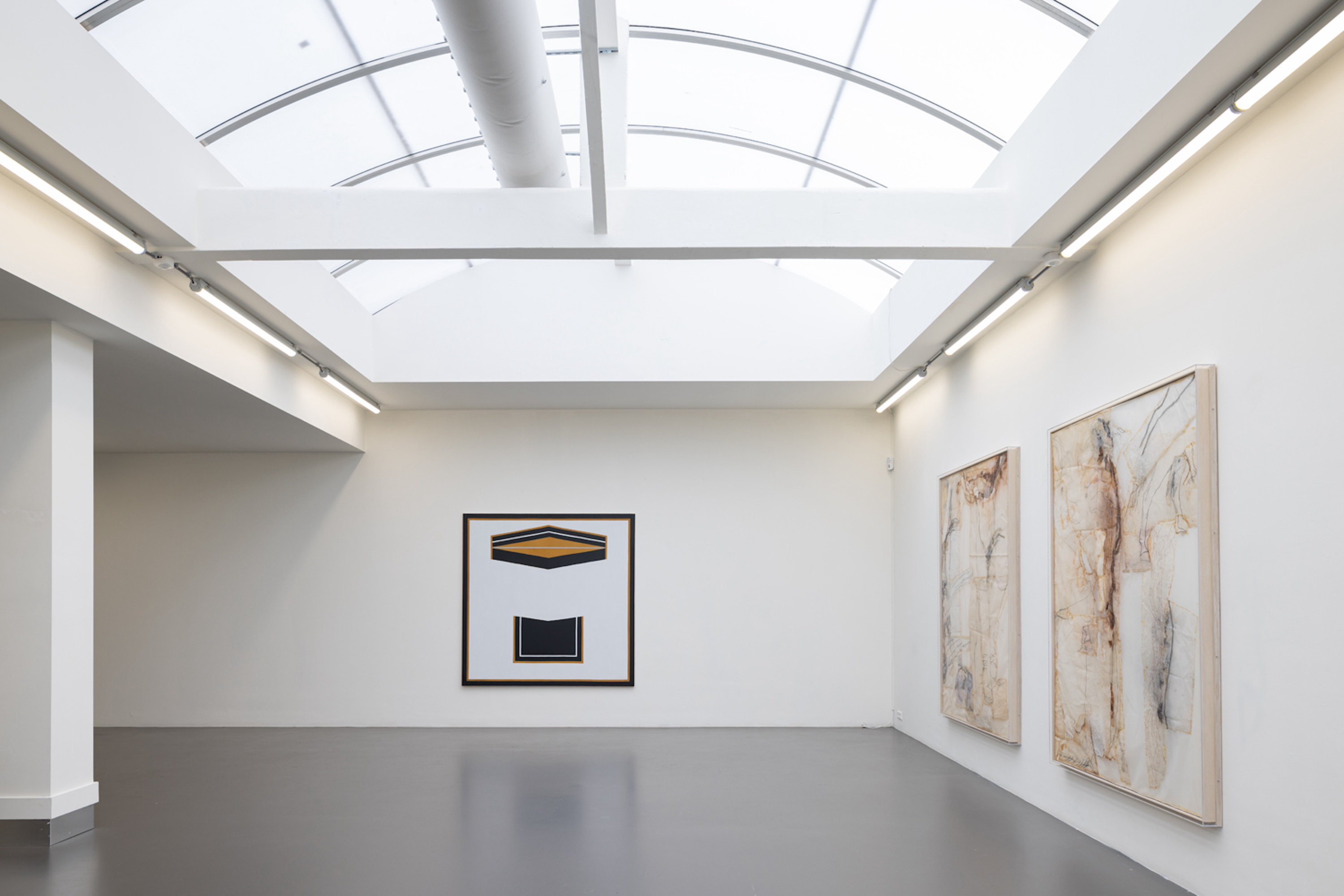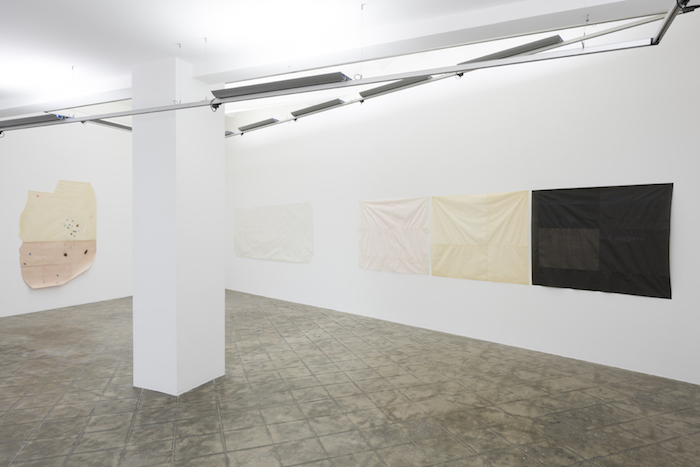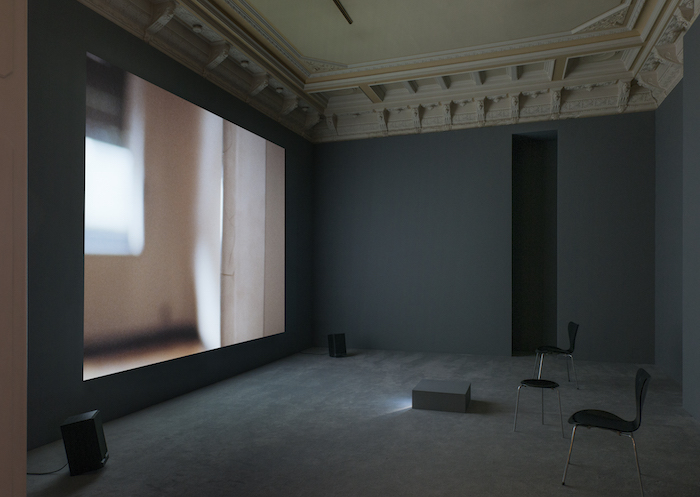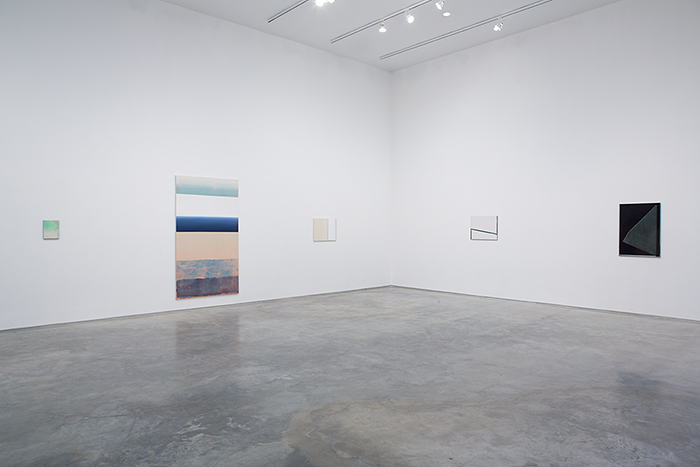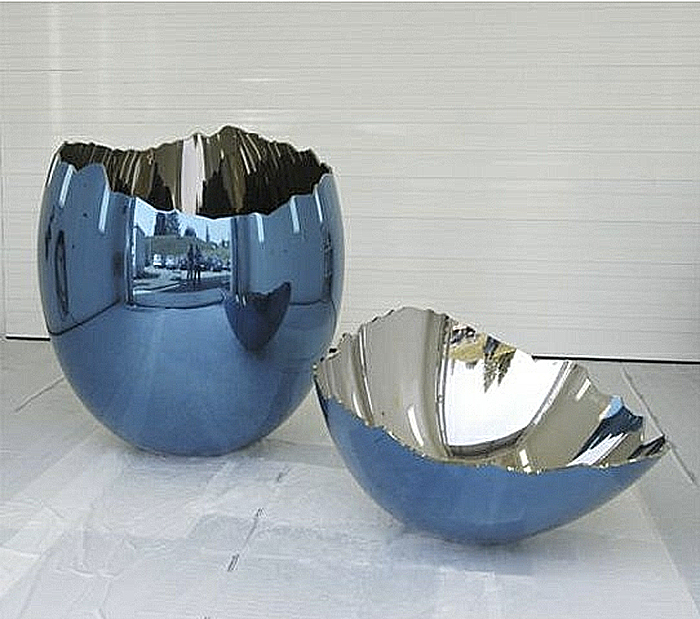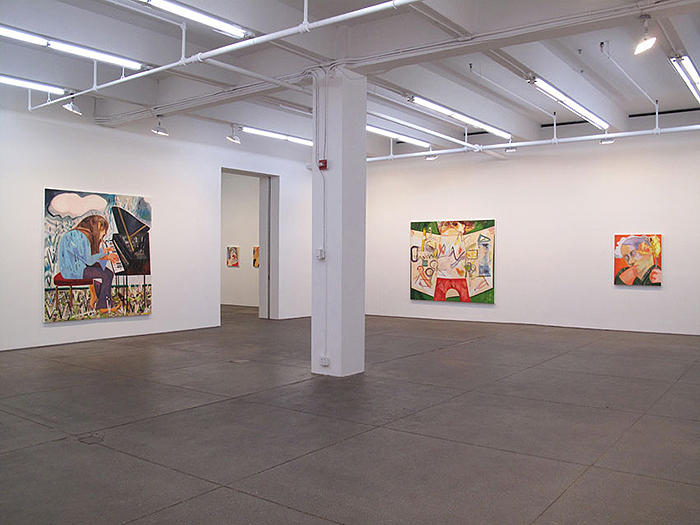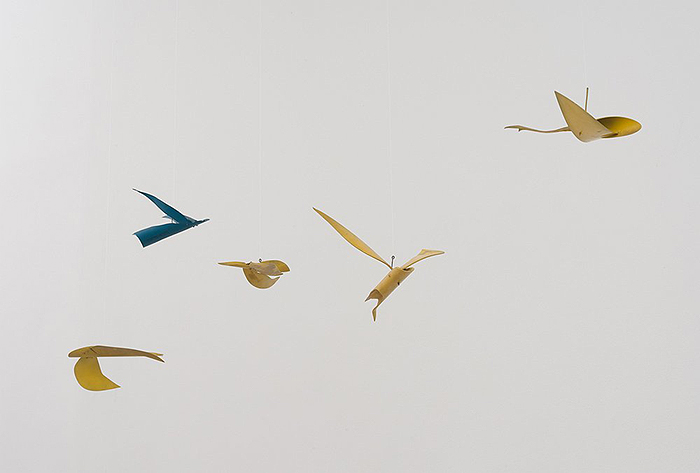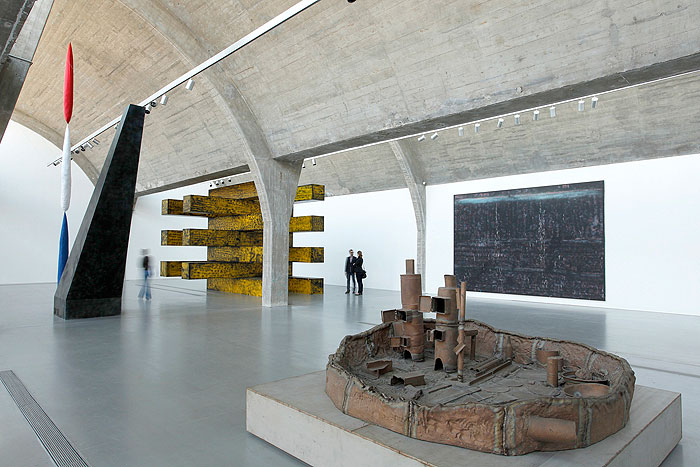Jo Baer nicknamed the five large-scale abstract paintings that compose “The Risen” (1960/61–2019) series her “zombie” works. Despite living in Amsterdam for the past forty years, Baer remains associated with the American minimalist movement, both for her works and for her bold public engagements (and squabbles) with the New York art world’s sculptors, critics, and dealers. Destroyed by the artist in the early 1960s, before which they were documented by Polaroid photographs, the “Risen” paintings were recreated in 2020.
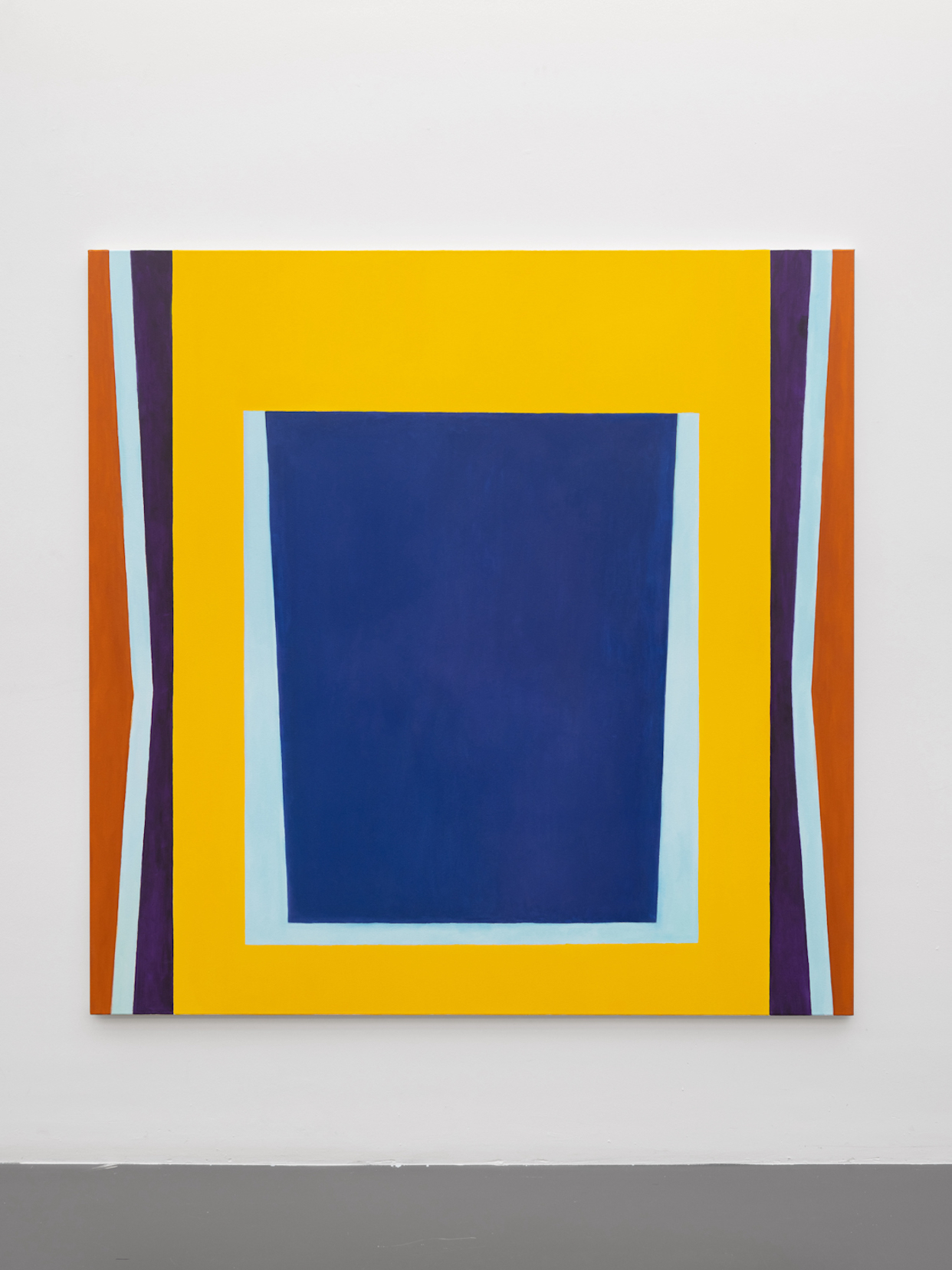
Jo Baer, The Risen (Blockade), 1960–1961/2019. Oil on canvas, 183.8 cm × 183.8 cm. Photo by Peter Tijhuis.
A few years earlier, the term “zombie formalism” was omnipresent in Western art criticism. A condemnation coined by Walter Robinson, it referred to an abstraction that had come back into favor in casual collusion with the speculative market, and suggested that an aesthetic not formed by new ideas but by a final evacuation of whatever shred of meaning was allowed to live within abstract painting.1 This notion came and went quickly in the currency of hot takes, but it hints at the changes and some lingering positional uniformity in art criticism in the six decades between Baer’s conception and recreation of these works.
Neither era’s discourses have sufficiently contended with Baer’s minimalist project, which found its stride and distinctive look quickly over the course of the 1960s. The large canvases of “The Risen” employ blocky symmetric shapes in thickly layered paint, with unusual color combinations (one resembles a warped, futuristic Albers). They are among Baer’s earliest paintings, and form a bridge between her late-50s/early-60s series of deliberate appropriations of famous abstract painters’ signature styles, and her optical-light studies of the mid-60s to early-70s. Informed by studies in biology and psychology, the latter groups of works typically feature expanses of white paint, contours and strokes of pure black; they make plays with shadow and perception that extend color to the sides of the canvas, and make use of lower wall positionings for alternate visual possibilities.
The most extensive critical assessment of these is a single essay by Lucy Lippard in Art in America in 1972, in which the writer ultimately admits defeat in fully understanding them. Baer destroyed “The Risen” works on the grounds that the art world “wasn’t ready for them.” Portaled into the current art world, they remain magnetic and unusual, especially their color contrasts and their lack of commitment to either perfect lines or messiness. Against mid-century abstraction’s association with a detached pursuit of form, these come with reading clues. Their original individual titles—Big Belly, The Wolf—are suggestive guides which help us recognise figures: basic gestures that resist binary logics of representation.
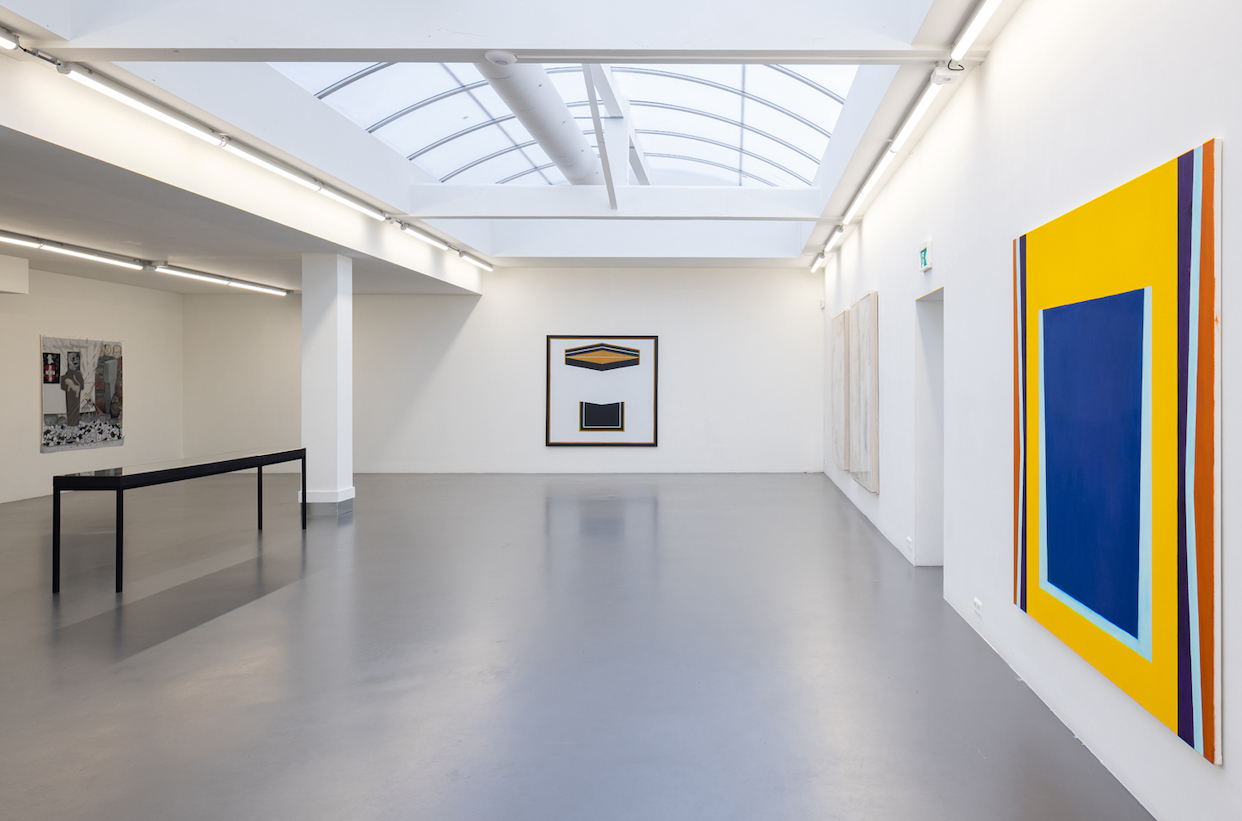
View of “Between the Lines (R.A.T.S. however…)” at ROZENSTRAAT - a rose is a rose is a rose, Amsterdam, 2024. Photo by Peter Tijhuis.
Originally commissioned by Art Agency Partners, a consulting subsidiary of Sotheby’s, the 2020 reproductions were acquired by and debuted at PACE, New York, as one of two solo shows inaugurating the then 91-year-old artist’s representation by the gallery. One show displayed “The Risen.” The other was a grouping of works categorized as “Originals,” offering selections of Baer’s practice from 1975 through to the present. The separation reinforces critical appraisals which cleave her practice into two discrete periods: the Minimalist painting era in New York (1960 to 1975) followed by her permanent relocation to Europe, where Baer develops a wildly different approach that merges figuration, iconography, historical symbols and objects, abstract gestures, and occasional text with color and line elements connecting objects and landscapes.
The two periods are also structured by a narrative circulated by the artist herself. The manifesto “I am no longer an abstract artist” was first submitted to the 1983 exhibition “Abstract Painting: 1960–69” at MoMA PS1 and was later published in Art in America. The text briefly traces abstraction’s multiple political associations and usages from the early twentieth-century avant-garde to the period in which she made “The Risen.” With no tears shed for Abstract Expressionism, Baer insists that its replacements were worse. In adhering to a regressive ideology of artistic autonomy and valuation of pure form, the 1960s minimalist works were “intentional flights from history, ethos, and significance,” hiding from a violent present instead of creating new imaginaries (Color Field painting, Pop, and Conceptual art are only passingly mentioned as vacant caricatures). When discussing her own work, the text becomes a touch exasperated, describing her aim to embracing the illusionary, “sleight-of-hand” character of painting, which sculptors, she argued, were running from.
“Most sensation is the edge of things,” Baer wrote in an essay on optics for Aspen magazine in 1970. The text focused on her paintings’ exploration of “Mach Bands” as perceptual guides between realms of light and dark, and as membranes allowing in other combined colors and a liminal perception. The related works, such as her triptych Primary Light Group: Red, Green, Blue (1964-65), became some of her best-known (she was about to destroy a similar set of these, too, until a peer offered to place one in a group show he organized). They are largely white or gray, with lines of black paint either hugging the edges or in strips, and a thin stroke of color as transition between the two, intended to trigger an illusion of the sense of brightness depending on a focus on the transition from white to black or black to white.
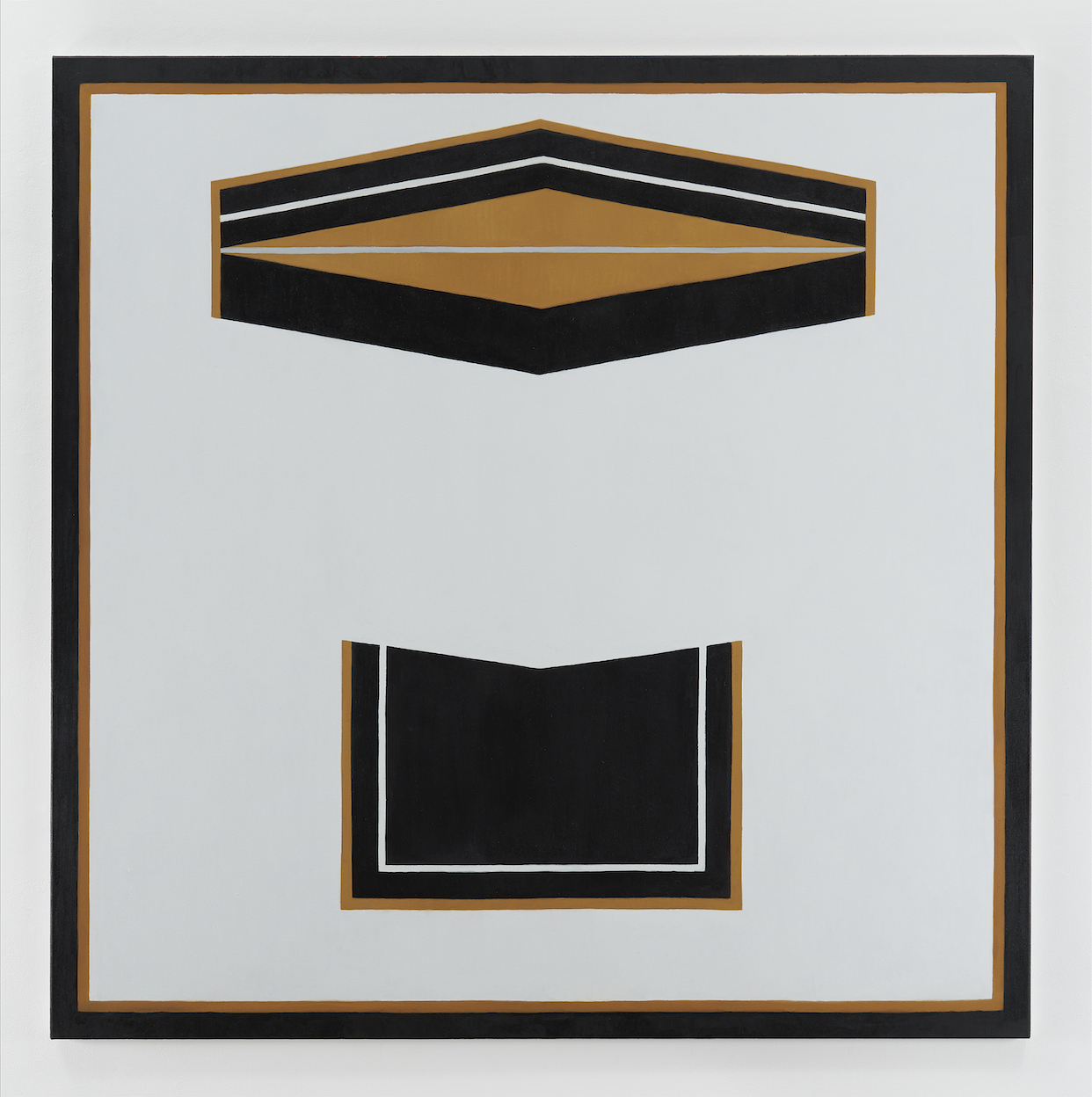
Jo Baer, The Risen (Wink), 1960–1961/2019. Oil on canvas, 183.8 cm × 183.8 cm. © Jo Baer. Courtesy of Pace Gallery.
One of the fiercest critiques she elaborated in her break-up with abstraction and New York was toward her previous peers, the pioneers of minimalist sculpture, men whose names we know. By paring down and taking apart objects, they equated the mundanity of objects with objectivity, which in their reductive reasoning proposed to “contain the real.” This mix of purity and reality echoes as counterpoint to the also-well-known male critics of that time who proposed that the further art gets from an attachment to reference, the closer to perfection in form it could become.
Patriarchy is exhausting. Baer’s critiques of its purity problems, and macho modernity’s disfavor of decoration, illusion, or figure, were echoed in other artistic and political manifestos at this time. Among them are tracts from the Italian collective Rivolta Femminile, whose “Assenza della donna dai momenti celebrativi della manifestazione creativa maschile” (On woman’s absence from celebratory manifestations of male creativity) (1971) made a women’s-separatist argument regarding the need to create and inhabit independent artistic languages in which to flourish. Rivolta insisted that the system was rigged to perpetuate what one member, critic and writer Anne-Marie Sauzeau-Boetti, later deemed a terminally “concealed but communal incongruence,”2 in which the assimilation by women into male culture left their experience undefined outside of relation to the dominant. They proposed a language of analysis for and of their works that would center their own roots, experiences, and subjectivity. Rather than prescribing an aesthetic or movement to become a next avant-garde, Rivolta’s proposal asserted several possible languages and values that could live alongside other discourses, thus supporting artistic needs for multiple imaginaries.
Baer’s manifesto stands out in another way by stating refusal retroactively: that is, announcing her departure from a field and scene years after it had already happened. Her solution to the problem of reality was to develop a painting language in what she described successively as radical figuration, image constellation, or image-painting. The taming of these descriptions suggests a change in relation to language and terminology that moves from refusal to assertive normalcy. Her works still often play with white space and use its contrasts to draw the eye in determinate directions, while adding in ahistorical objects and landscapes from incongruent places and times.
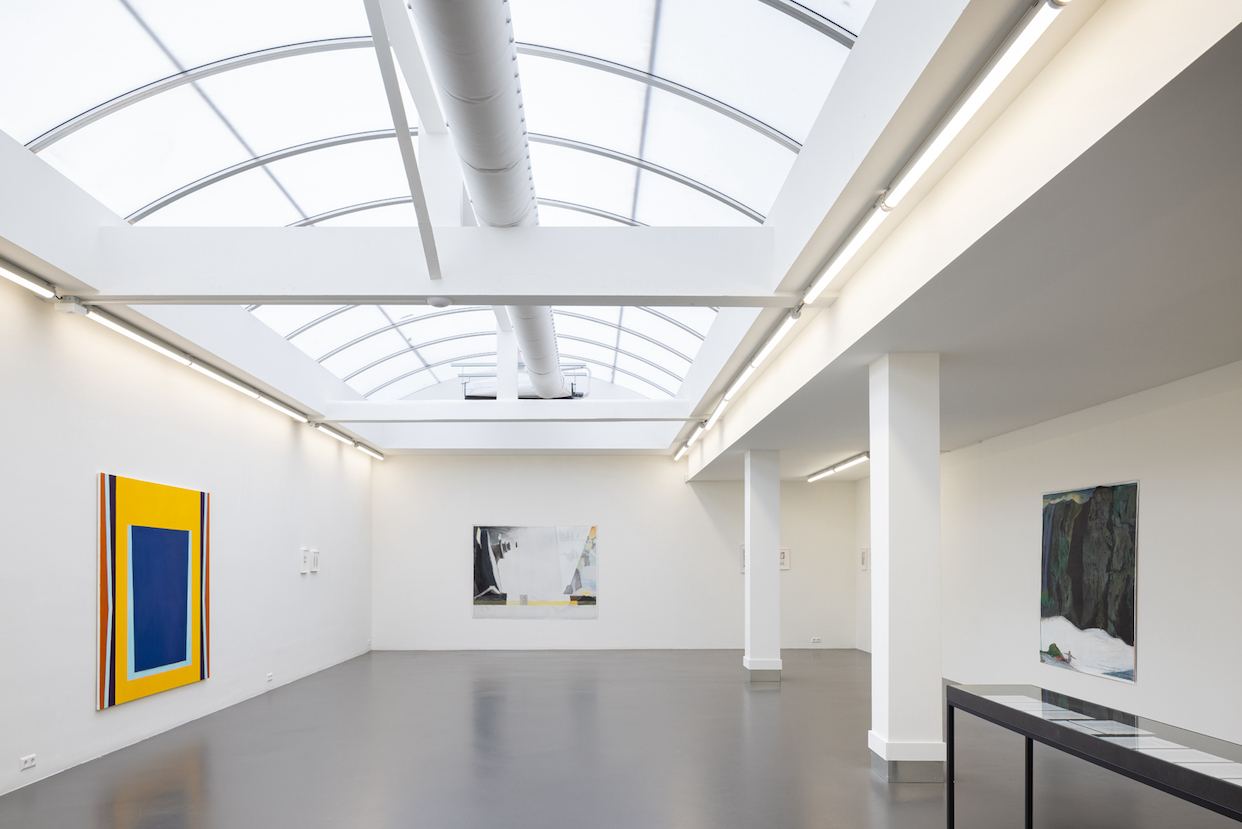
View of “Between the Lines (R.A.T.S. however…)” at ROZENSTRAAT - a rose is a rose is a rose, Amsterdam, 2024. Photo by Peter Tijhuis.
This perhaps reinforces the argument that the decisive and permanent change in Baer’s style had little to do with form, but with discourse, timing, and exasperation. Her work made since the break has found some success with European collections and dealers, but has not received rigorous attention from critics anywhere. Part of this is due to her leaving New York, the withered heart of the art world, but also because the later paintings, despite many differences among them, somehow come off as timelessly uncool. The work escaped into a hermeticism in which referents could freely merge: figures from geologic, artistic, scientific, and cultural history as icons or disproportionate objects seen in paper maps. It is also fascinating how difficult to read they still are, confounding expectations for figurative work, and despite Baer’s prolific writing about her methods, research, and choices.
In a 1995 interview for Bomb, Baer concluded, “There’s no real reason why what was done in abstract art can’t continue to be done just as well with images, instead of triangles and squares.” The reversal of demand on abstraction to do suggests the lost potential to develop its languages and frameworks from within, and as a lineage or continuum. Still, a decade ago accusations of zombie formalism suggested that western abstract painting might be finally dead, at best revivable as tradable objects mysteriously attached to value. This was kindled by the verbiage of survey shows like MoMA’s “Forever Now” (2014–15) which proposed a then-contemporary trend of timeless abstract painting: forms that could not be placed within a specific context, all their referents tucked away.

Jo Baer, Dusk (Bands and End- Points), 2012. Oil on canvas, 220 cm × 300 cm. © Jo Baer. Courtesy of Pace Gallery.
Since then, the repetition of those unviable premises of uniformity have been contested via surveys of Black American abstraction past and present, Indigenous painting and sculpture, and the (weirdly belated) discovery in the putative North of a whole twentieth century of Global South abstract art. It may be obvious to point out, but what is thought of as legible, representational, high or low is subject to authority. Among those that were developed in parallel to the West’s abstract movements, many works in the Black and Indigenous abstraction of the Americas intentionally used the assumption that lines, grids, redactions, and smears were uncontaminated by meaning to hide or pack away trauma, stories, and languages. Others simply carried on symmetric, mathematical, and decorative cultures much longer in the making, such as in Islamic design and South American Indigenous pattern weaving. Others yet, such as Aboriginal songline paintings, were never intended as abstraction in the modern art definition, and have only been classified as such because of their magnitude and incidental mastery of a specific idea of painting compositional form.
Overdue discussions about the subjective nature of reality’s connection to purity, and the ideology and impossibility of purity in itself, go hand in hand. Echoed in polemics across several creative and scientific fields, these rereadings are helping to retroactively bring poly-subjective and alternate forms of representation and abstraction back to life. The work Baer made while on the “inside” was successful enough to suggest that her career was only beginning, but it was not going to be understood as she wanted at the time, if ever. Her quick acknowledgement of that, and her will to escape her probable destiny as a blue-chip artist, went against the art market’s terms. Though not overtly intended as a political or resistant gesture, its assertion of an ongoing desire to study, research, and express herself on her own terms, and against marketability, sits in an instructive way alongside these reappraisals of what abstract painting can be and has been.
Walter Robinson, “Flipping and the Rise of Zombie Formalism,” Artspace (April 3, 2014), https://www.artspace.com/magazine/contributors/see_here/the_rise_of_zombie_formalism-52184.
Annemarie Sauzeau-Boetti, “Negative Capability as Practice in Women's Art,” Studio International, vol. 191, no. 979 (January/February 1976): 24.
